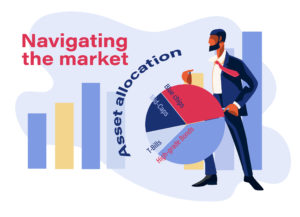I recently adopted a specific type of dynamic asset allocation for my personal portfolio. I call it Variable Asset Allocation (VAA). It only deviates from my original long-term plan when the world’s stocks become pricey, but any time you change your long-term investing plan, there’s the possibility you’re just looking for a smart-sounding justification for giving in to your emotions.
It’s certainly true that I’ve been concerned for some time that stock prices are high and that the chances of a stock market crash have been rising. But I know better than to join the chorus of talking heads predicting the imminent implosion of the stock market. I don’t know what will happen to stock prices in the future.
I’m not tempted to just sell everything and wait for the crash. It’s possible that stocks will keep rising, and when they finally do decline, it’s possible they’ll remain above today’s prices. It must be sickening to wait for a crash that doesn’t happen. This would have been the fate of someone who decided 5 years ago that prices were too high and sold out.
Waiting for a Crash that never comes
Whenever an investor sells completely out of stocks, the problem is when to get back in. Sometimes, it’s a significant market decline that causes investors to sell all their stocks in fear. Then they have to decide when it feels safe enough to buy back in. Too often, they wait until prices are much higher than when they sold. The same thing can happen to those who sell because they think stock prices are too high. They can sit in cash waiting for the big crash that never comes.
So, could some form of this happen to me with my VAA? The answer is no, but only if I follow VAA strictly. With VAA, if my portfolio’s blended Cyclically-Adjusted Price-Earnings (CAPE) ratio exceeds 25, I add CAPE minus 25 (as a percentage) to my bond allocation. For example, when the blended CAPE of my portfolio sits at 32, I add 32-25=7 percentage points to the bond allocation I would have had if the CAPE were below 25.
If stock prices rise, the CAPE rises, and if my bond allocation rises enough to trip my rebalancing threshold, I rebalance from stocks to bonds. However, given that I’ve chosen to adopt VAA, selling stocks is easy because that’s what my emotions are already telling me to do.
What if stock prices go down by just enough to trip my rebalancing threshold? VAA would have me buy back some stocks. But what if I’m still nervous about owning too many stocks? I might delay rebalancing, or worse, I might tinker with my VAA rules so that I don’t have to buy stocks. This is the danger of constantly tinkering with long-term plans. Even if each change has a smart-sounding reason, I might really be just giving in to emotions.
So, the real test of whether my switch to VAA is a fixed long-term plan will come if stock prices drop enough that my spreadsheet calls for rebalancing from bonds back to stocks. I admit that when this happens, I likely won’t feel good about buying stocks, but my intention is to obey the spreadsheet.
 Michael J. Wiener runs the web site Michael James on Money, where he looks for the right answers to personal finance and investing questions. He’s retired from work as a “math guy in high tech” and has been running his website since 2007. He’s a former mutual fund investor, former stock picker, now index investor. This blog originally appeared on his site on Dec. 20, 2021 and is republished on the Hub with his permission.
Michael J. Wiener runs the web site Michael James on Money, where he looks for the right answers to personal finance and investing questions. He’s retired from work as a “math guy in high tech” and has been running his website since 2007. He’s a former mutual fund investor, former stock picker, now index investor. This blog originally appeared on his site on Dec. 20, 2021 and is republished on the Hub with his permission.



